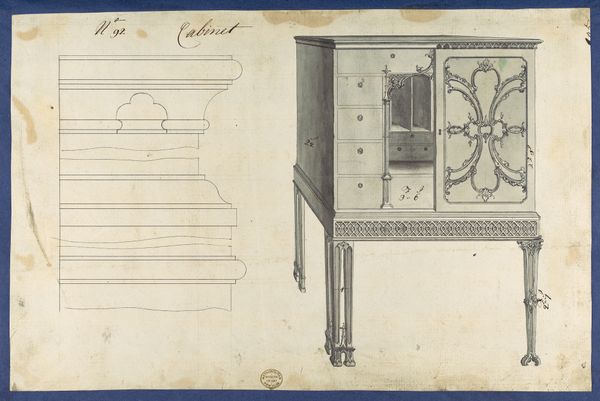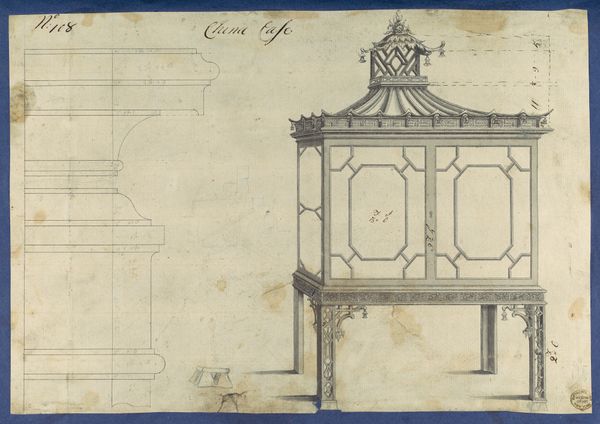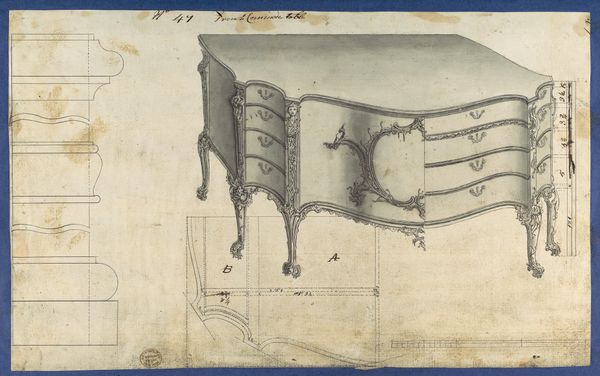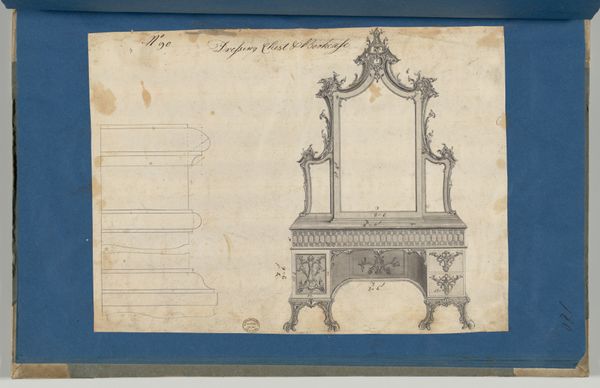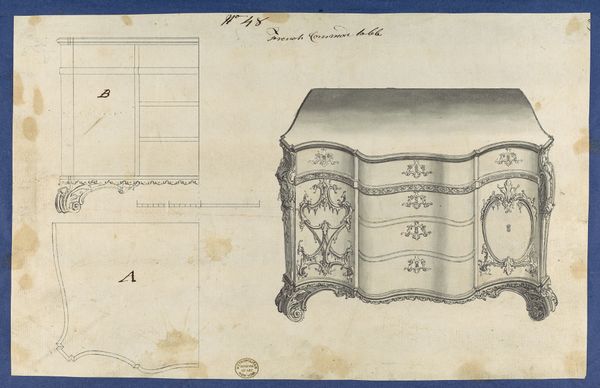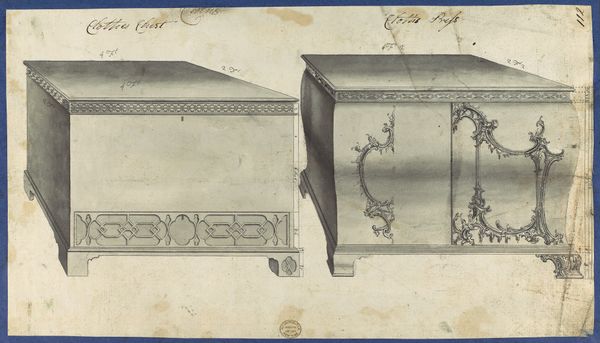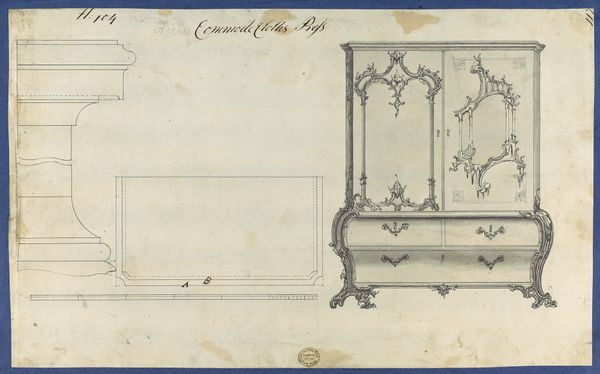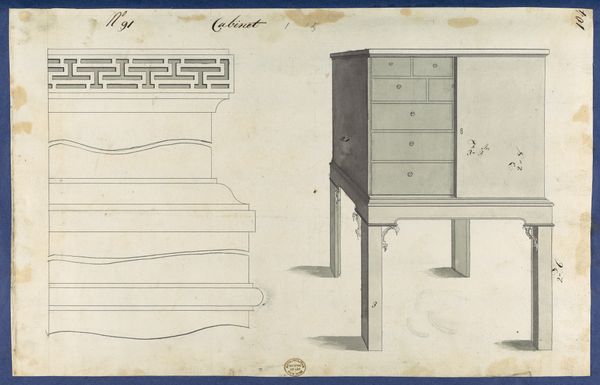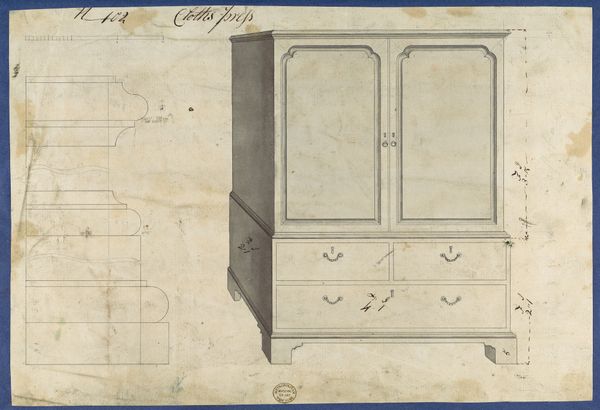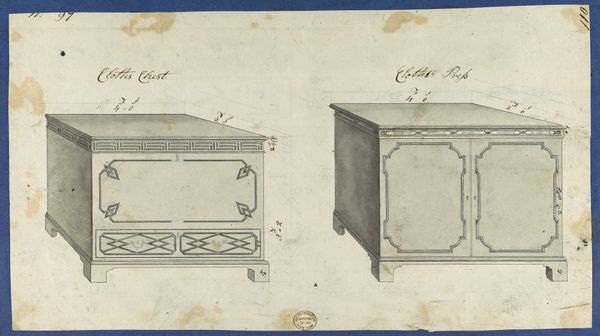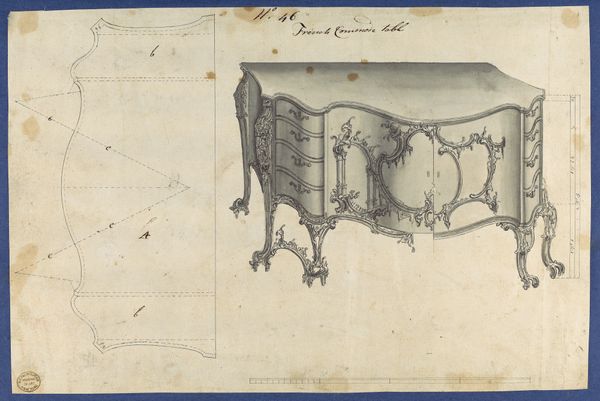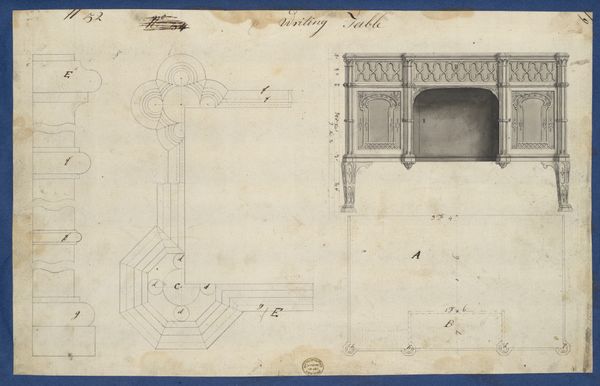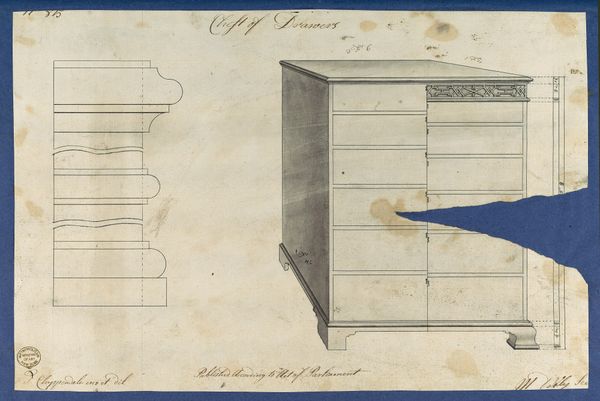
Commode Clothes Press, from Chippendale Drawings, Vol. II 1753
0:00
0:00
drawing, print, architecture
#
drawing
# print
#
form
#
line
#
decorative-art
#
architecture
#
realism
Dimensions: sheet: 8 9/16 x 13 1/2 in. (21.7 x 34.4 cm)
Copyright: Public Domain
Editor: Here we have Thomas Chippendale's "Commode Clothes Press, from Chippendale Drawings, Vol. II", created around 1753. It's a drawing or print of a, well, commode. The fine linework is impressive. What are your immediate thoughts on its visual presentation? Curator: Observe the drawing’s deliberate use of line, its precision and clarity. Chippendale prioritizes a clear articulation of form over subjective expression, evident in the stark lines which delineates shape. The realism portrayed suggests a deep interest in spatial organization. Editor: That makes sense. It's definitely about the design, but does the symmetry mean something too? Curator: Symmetry in design often conveys balance and harmony. The central axis around which the piece symmetrically composes signifies order, a common aesthetic objective within decorative arts. Consider the relationship between utility and form. Do you find the ornamentation purely aesthetic or integral to the functionality? Editor: I see it as mostly decoration, it does affect the function of a commode, though. It wouldn’t change its function as something to hold clothing. So is there a way that the decorations have meaning within the functionality of the piece? Curator: An incisive question. How does the visual structure, its form and shape, impact how we understand or perceive its utility, even without knowing its intended purpose? Editor: I hadn't thought about that before! Thanks for guiding me to understand better the harmony between form and function within a work like this. Curator: The analysis of its compositional elements opens avenues into design theory and functional art. Always ask how the visual choices dictate our understanding.
Comments
No comments
Be the first to comment and join the conversation on the ultimate creative platform.
